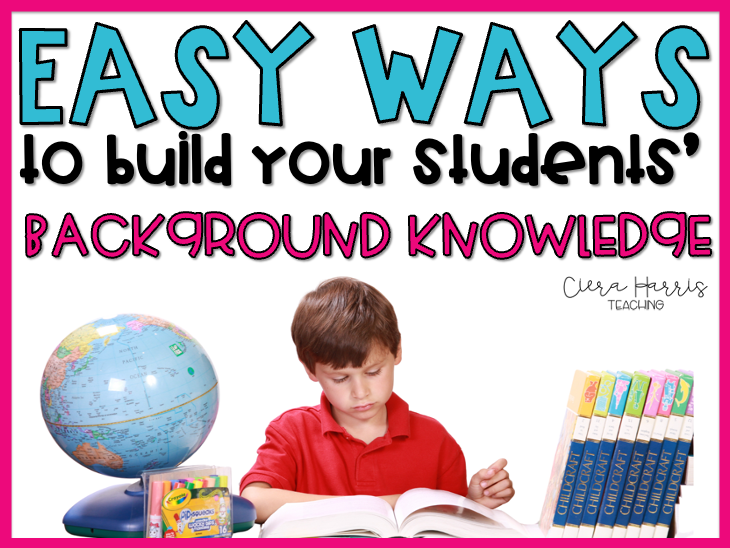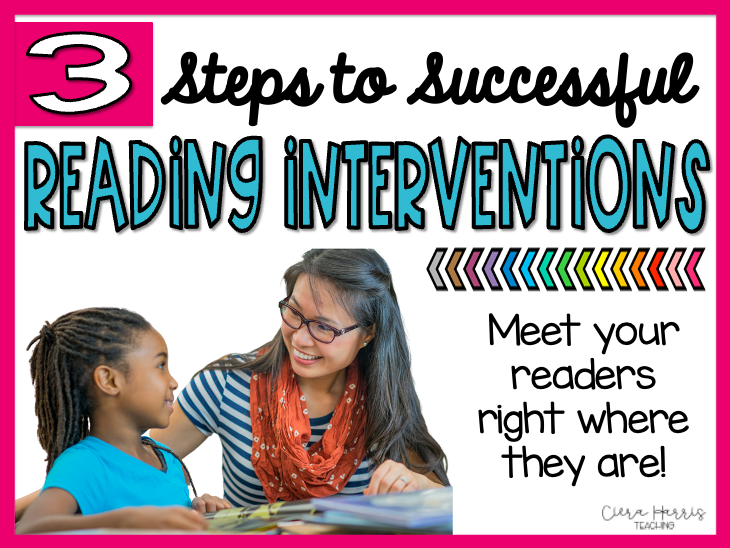Using picture books is one of the best and easiest ways to teach your students all about different reading skills. But since there are so many out there, how do you decide which to use to just read aloud for fun and which to use to teach skills? I’ve gathered a list of my favorite fiction books that I use to teach reading skills and can’t wait to share it with you! (If you’re looking for nonfiction books to teach reading skills, I have that list too!)

(This post contains Amazon affiliate links. This means that Amazon sends me a little pocket change, at no cost to you, if you purchase through on of these links. This helps keep my site running and funds giveaways for you!)
Fiction Book #1: Chicken Dance
 The Chicken Dance is an absolutely adorable book about two chickens who enter a contest to win tickets to see their favorite singing star. Students will love the silliness and simpleness of the story as will you! So what can you use this book to teach? Plot!
The Chicken Dance is an absolutely adorable book about two chickens who enter a contest to win tickets to see their favorite singing star. Students will love the silliness and simpleness of the story as will you! So what can you use this book to teach? Plot!
This book is great to teach plot because it is a super quick read. You don’t want your students to sit through a long and drawn out book when you’re trying to get them to understand what plot means and how to reconstruct the plot of a story. Find something quick and to the point so you can get to the good stuff and teach! Teachers want students focused on understanding the skill and not spending all of their brain power trying to remember and comprehend the text – use those books later when they have a more solid understanding of plot.
Also this book have very clear story elements for students to use to help them reconstruct the plot. There are obvious step by step events in the story that students will need to pick up on, rather than just stating the beginning, middle, and end of the story. Oh, and there’s a very obvious climax too! So if you’re teaching the plot diagram and more advanced vocabulary, you have a great example of where and how to identify the climax of a story.
Fiction Book #2: Dog Breath
Dog Breath is a super cute story about a young dog with bad breath (obviously). The kids in the family love him but the parents, not so much! They want to get rid of him until his bad breath comes in handy. So what is this book great for teaching? Problem and Solution of course!
him but the parents, not so much! They want to get rid of him until his bad breath comes in handy. So what is this book great for teaching? Problem and Solution of course!
Problem and solution is a skill that many students pick up on quickly, so teachers are usually trying to find ways to amp it up. The problem in this book is clearly stated so you definitely know you can go deeper into more about problem than just identifying. In this story you can focus on the steps that the characters took to find a solution to the problem. Also, there are multiple underlying problems so it’s great to talk about with students about how some stories can have more than one!
Finally, I love this book for problem and solution because the ‘solution’ in the story, technically isn’t an actual solution to the ‘big’ problem. Instead it’s a way for the characters to cope with the problem. Many stories are like this, which makes identifying solutions harder for students and this is a great example of that!
Fiction Book #3: Stand Tall Molly Lou Melon
 If you haven’t read this book yet, you’ll thank me for recommending it. If you have read it, you’ll thank me for reminding you about it. Molly Lou Melon is an adorable character with a lot going on, so what better book to use to teach characterization?
If you haven’t read this book yet, you’ll thank me for recommending it. If you have read it, you’ll thank me for reminding you about it. Molly Lou Melon is an adorable character with a lot going on, so what better book to use to teach characterization?
When teaching characterization early on, you don’t want to use a book that’s deep and having students making big inferences about the character. You want a book that has clear examples that students can pick up on and discuss to learn. In this book, the author literally GIVES you examples of traits for Molly, both internal and external. And what’s better, later in the book, the author then gives us examples of these traits in action. So not only are readers able to identify traits they have strong evidence in the text to use to support the traits. Could that BE any better?
Want to snag all of these graphic organizers to use with the books? They are yours for FREE below!
Fiction Book #4: The Dog Who Cried Wolf
The Dog Who Cried Wolf is an adorable story of a young pup who wants to be a wolf. He runs off and  decides to become a wolf, only quickly to realize he misses his life as a dog. This is a great book to use to teach Summarization!
decides to become a wolf, only quickly to realize he misses his life as a dog. This is a great book to use to teach Summarization!
When teaching summarization, you again, don’t want a long drawn out book that students are going to have a lot to remember and understand and THEN have to put all of that information into learning about summarization. Instead, you want a simple book that has strong content that you can use to teach the specific pieces and parts about summarization.
This story also have a very clear SWBST (Somebody, Wanted, But, So, Then). So when you’re first introducing that strategy or practicing it, you want to make sure the book you’re reading has these pieces, obvious enough for your students to pick up on. Also, this book is great for going through and sorting important versus unimportant events too! Definitely grab these!
Fiction Book #5: The Gardener
 This book has absolutely beautiful illustrations! I could look at it over and over again! The Gardener about a young girl who is taken to work in her uncle’s bakery to help her family with their money problems. She knows nothing about baking but instead is a gardener at heart. This book is perfect for teaching point of view!
This book has absolutely beautiful illustrations! I could look at it over and over again! The Gardener about a young girl who is taken to work in her uncle’s bakery to help her family with their money problems. She knows nothing about baking but instead is a gardener at heart. This book is perfect for teaching point of view!
Why is this perfect for point of view? The entire book is written in letters to and from the little girl’s family! When teaching point of view, you want to have a lot of strong examples of where students can find who is telling the story with and without relying on pronouns and this book is it!
Fiction Book #6: The Stray Dog
Talk about a book that tugs at your heartstrings! This book is about a young stray dog who is about to get  caught by the dog catcher but instead is saved by a young family. This beautiful story is perfect for teaching making inferences!
caught by the dog catcher but instead is saved by a young family. This beautiful story is perfect for teaching making inferences!
Literally, on almost every single page, there are inferences to be made, both surface (easy) inferences and deep inferences so it’s perfect for a wide range of grade levels. In order for students to be successful at making inferences, they need to be able to connect with the text and use their schema to infer. This book is great for both! Oh! And inferences in this book can be made both from the text and from illustrations too!
Fiction Book #7: The Invisible Boy
 Again with the tugging at the heartstrings! I’m pretty sure I cried the first time I read this book. If you haven’t read it yet, get ready! The Invisible Boy about a young boy who feels very invisible in his classroom. No one speaks to him, asks him to play or work with him. He is completely unseen. It isn’t until a new friend in the classroom arrives that he finally begins to make friends. This book is perfect for teaching theme!
Again with the tugging at the heartstrings! I’m pretty sure I cried the first time I read this book. If you haven’t read it yet, get ready! The Invisible Boy about a young boy who feels very invisible in his classroom. No one speaks to him, asks him to play or work with him. He is completely unseen. It isn’t until a new friend in the classroom arrives that he finally begins to make friends. This book is perfect for teaching theme!
When teaching theme, especially at the beginning, you want a book with a very obvious theme. Why? Because you want the students to focus on the evidence and supporting the theme than the theme itself. When themes aren’t as apparent, students will have the ability to search for that evidence which will them help them out!
Also, throughout the book the character’s feelings and thoughts are very apparent. There’s a big change in the character from the beginning of the text to the end of the text. Both of these are great focuses for students to practice analyzing the theme of a story.
Fiction Book #8: The Recess Queen
This has to be one of my favorite read-alouds of all time. The Recess Queen is about a bully who is ‘in  charge’ of recess, that is until a new student arrives who isn’t afraid of putting the recess queen in her place! This book is great for teaching main idea!
charge’ of recess, that is until a new student arrives who isn’t afraid of putting the recess queen in her place! This book is great for teaching main idea!
This story has a very easy to remember plot, which is important when teaching main idea. If students can’t remember the plot of the story, they won’t be able to pick up on the main idea. The events in the story are very clear and not confusing. There are tons of supporting details to choose from. Sometimes I’ll even have my students list out all of the supporting details. Then they rank them from most supportive to least supportive. So many possibilities!
Whew! What a list! I hope you found some awesome book recommendations for your classroom library! If you want to save this article for later, make sure to pin the image below!






